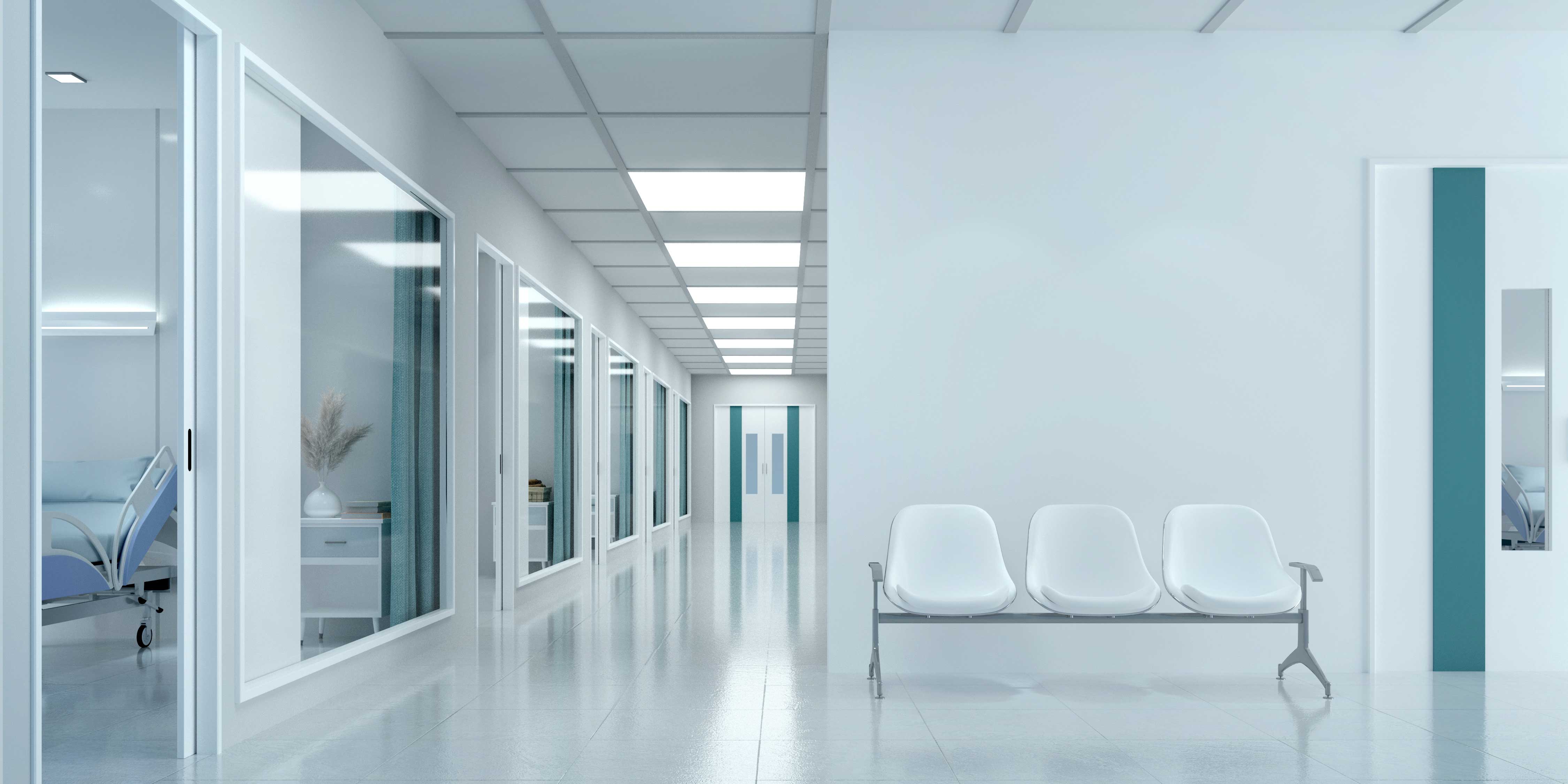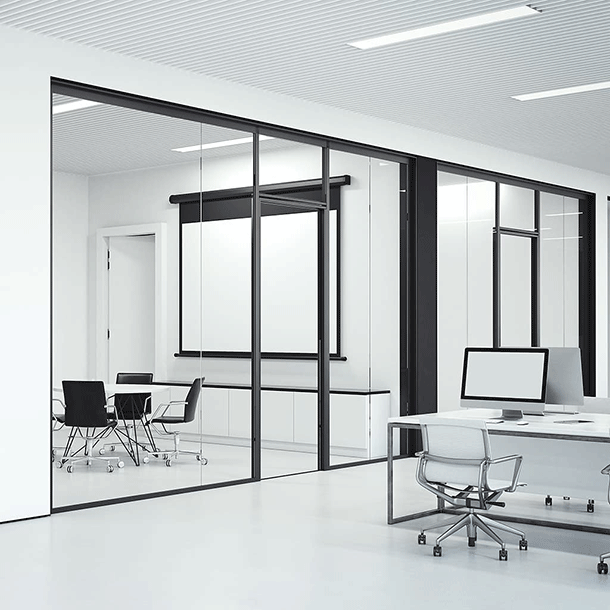In modern healthcare spaces, a new trend is emerging, wherein exam room walls are intentionally designed to stop at or just above the ceiling. This innovative approach is motivated by various factors, such as cost-effectiveness, accommodating large floor-to-floor heights, facilitating prefabricated constructions, and ensuring flexibility for building services.
The 2022 Facility Guidelines Institute (FGI) Guidelines for Design and Construction of Outpatient Facilities now allow for a specific arrangement. According to FGI, exam rooms equipped with electronic sound masking can maintain a composite Sound Transmission Class (STC) rating of 40 between them. This innovative provision enables walls to end before reaching the deck while still ensuring acoustic integrity remains intact. Let's explore further how this requirement achieves its purpose.

By stopping the wall construction short of the deck, the ceiling construction plays a crucial role in sound isolation. The American Society for Testing and Materials (ASTM) defines the Ceiling Attenuation Class (CAC), which effectively represents the STC between rooms provided by the ceiling. For optimal results, a ceiling system with a CAC rating of 40 should be selected. To maintain the effectiveness of sound isolation with a plenum return system, return openings should be minimized (e.g., using plaque constructions) and equipped with acoustically lined elbows, canopies, or silencers. Additionally, light fixtures must be sealed and should not ventilate into the ceiling plenum. Pendant lighting is the ideal option, but it may not always be feasible in exam rooms. Therefore, any back housing behind the light fixture should be free of holes.
When sound masking is not used, FGI mandates an STC 50 rating for exam room to exam room isolation. However, achieving this requirement with non-full-height walls is impractical as the ceiling significantly affects the effective STC between rooms. Instead, a more achievable wall construction with an STC rating of 45 can be implemented using a Gypsum Wall Board (GWB) stud wall or a modular prefabricated system.

To compensate for the lack of full-height walls, sound masking becomes essential. Exam rooms can be equipped with direct field sound masking systems that penetrate the ceiling or plenum systems above the ceiling. The sound masking levels within the exam rooms should fall between 42 and 44 dBA, ensuring sufficient coverage to mask unwanted speech while still allowing for conversations within the exam room. In spaces with fully open plenums and varying sound levels, caution must be exercised, especially if different sound levels are intended for exam rooms and open areas or corridors.
Doors in the exam rooms must be fully sealed, including the door bottom. Utilizing gaskets on the door frame, an automatic door bottom, or a raised threshold with a passive bulb seal on the door bottom are effective strategies. The threshold and passive seal option reduces maintenance and alignment issues, but it introduces a slight height discontinuity into the floor, with thresholds as low as 1/4 inch.
Sliding doors present challenges in terms of sealing, particularly along the vertical trailing edge and the head of the door. The inclusion of an automatic door bottom is recommended to enhance sound isolation. To ensure the right door selection, conducting mockups with various manufacturers can help assess the quality of construction and sound isolation capabilities.
NOTE: Sliding doors are generally quite poor in terms of performance. They frequently exhibit substantial gaps all around, rendering them far from airtight. We have measured the sound transmission class of sliding doors to be within the range of STC-20 to 22 points, which is inadequate for ensuring even basic confidentiality. The implementation of sound masking is imperative, but there still remains a limitation on the extent of improvement achievable.
For areas adjacent to noisy spaces like mechanical rooms, it is advisable to employ more substantial full-height walls to reduce noise transmission effectively.
In the case of renovating high-ceiling spaces, such as former big box stores, where walls cannot be extended to the deck, constructing gypsum board "caps" above conference and meeting rooms is recommended. However, spaces such as these typically do not benefit from sound masking.
In conclusion, with careful attention to the details and the implementation of sound masking solutions, the innovative approach of stopping walls short of the deck can work effectively for exam rooms. If you are considering implementing this approach in your next project, feel free to contact us for expert guidance and support.




